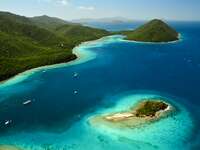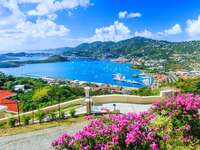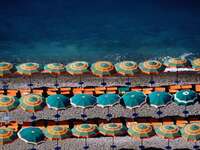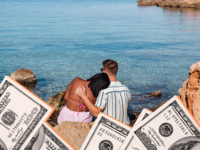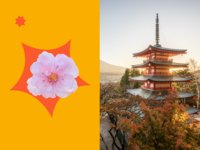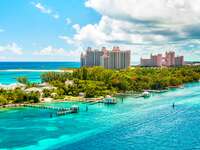The Complete Guide to a St. John Honeymoon
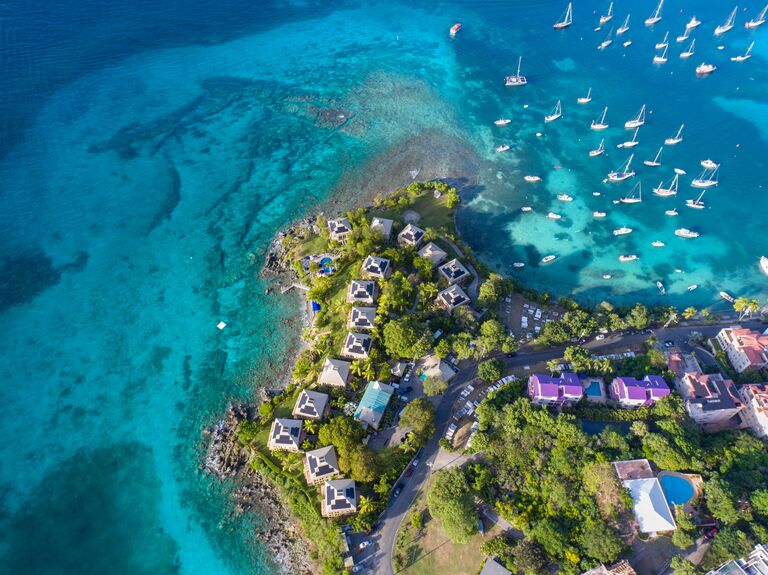
Local laws may restrict service availability to all. See the Equality Index for more information.
A St. John honeymoon really is the vacation dreams are made of. Just imagine crystal-clear blue hues circling your toes, verdant national parks teaming with wildlife and adventure, and fresh-caught seafood splashed with juicy coconut. This postcard destination located in the US Virgin Islands is perfect for lovers seeking a true island escape. No airports, no cruise ship docks and, most importantly, no crowds. You'll take a three-hour flight from Miami International Airport to St. Thomas followed by a 45-minute ferry ride to St. John. The small extra "hurdle" acts as a filter to all that tourist noise, rewarding your efforts with the sweet, sweet sound of seclusion. St. John is the smallest of the three US Virgin Islands (including St. Thomas and St. Croix) and the best for couples seeking quality alone time. US visitors also require no passports, so your Caribbean vibes come with domestic perks. Ready for bliss? Here's how to melt away the St. John way.
St. John Honeymoon Tips in this Article:
- Is St. John Good for a Honeymoon?
- The Best Times to Visit St. John
- St. John Honeymoon Tips for Couples
- Best St. John Day Trips and Places to Visit
- Best Things to Do in St. John, USVI for Couples
- The Best St. John Resorts and Honeymoon Packages
- What to Pack for a St. John Honeymoon
Is St. John Good for a Honeymoon?
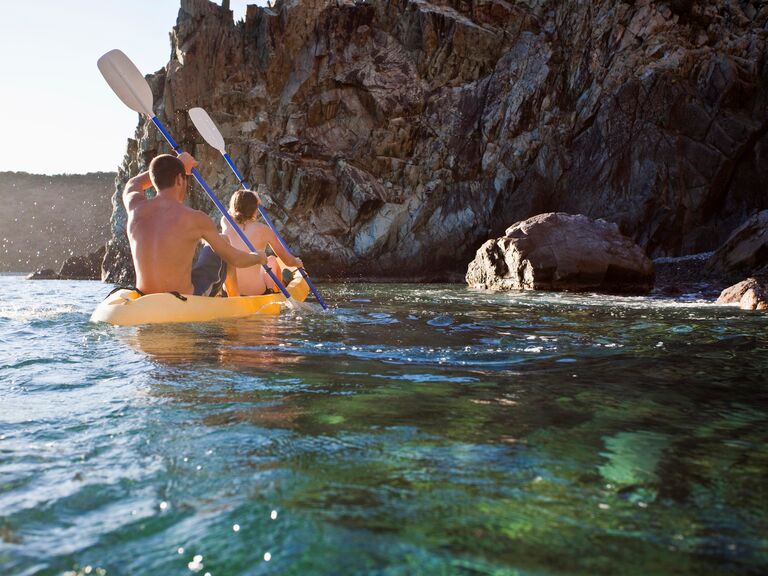
Pros of a Honeymoon in St. John
St. John is the most pristine and uninhabited of the Caribbean islands, with two-thirds of it comprising protected national park. You'll feel a world away from… the world. Situated within a US territory, St. John allows US travelers to visit with ease—they require no passport, incur no international roaming fees and can use US dollars just as they would on the mainland.
Cons of a Honeymoon in St. John
There are no direct flights to the island, but it's well-serviced by a local ferry. As with many Caribbean getaways, expect to operate on "island time," which could induce anxiety for extreme schedulers (don't worry, you'll ease into it in no time). In addition, due to reliance on imported goods, the cost of necessities will feel steep compared to back home.
The Best Times to Visit St. John
The best time to visit St. John is between December and April when the temperature hovers between 74 and 89 degrees Fahrenheit. Avoid the holiday weeks around Christmas and New Year's if you want quieter moments and the best prices. June to November are the rainiest and most humid months, and this is also when hurricane season falls.
St. John Honeymoon Tips for Couples
St. John is the perfect escape for East Coast residents, as it's a short direct flight from Miami. In spring and summer, there's no time change for East Coasters, but when clocks go back in fall and winter, St. John's will be an hour ahead. No passport is required for US visitors to St. John—you can simply travel with a government ID such as a driver's license.
Best St. John Day Trips and Places to Visit
Add an adventure to your itinerary for unforgettable honeymoon memories in St. John.
Snorkel the Island's Cays and Bays
Surrounded by clear water as far as the eye can see, you'll want to explore the beauty beneath the ocean. Viator's St. John Luxury Turtle Snorkel and Cays Full-Day Tour sees professional guides charter small groups across St. Thomas and St. John to swim alongside rare green sea turtles and stingrays that glide below. Food and top-shelf liquor are included.
Visit the Annaberg Sugar Mill
Part of the national park, the Annaberg Sugar Mill is an island landmark that offers insight into St. John's sordid history with slavery and the establishment of the mill. Afterward, many visitors take to nearby Leinster Bay Trail, a scenic hike that corridors Waterlemon Cay. Tip: Try spotting marine life from above, as the current is often strong and there are no amenities.
Best Things to Do in St. John, USVI for Couples
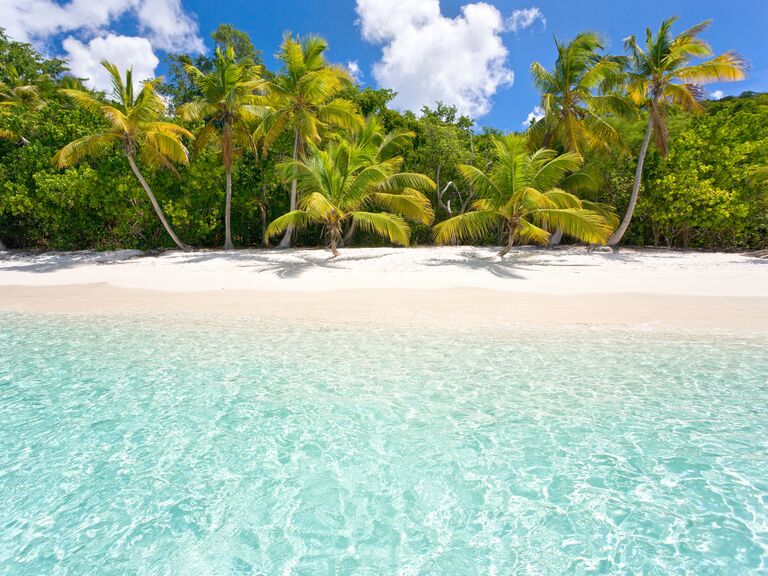
Bond with your partner as you relax, feast and paddle the island.
Sunbathe on Honeymoon Beach
It's called Honeymoon Beach for a reason: This is one of the Caribbean's most romantic spots. The large stretch of powdery white sand is usually secluded due to the mile hike that must be taken from the visitor center to reach it, but you'll be in bliss upon arrival. Roll out your beach towel and canoodle way.
Feast at Morgan's Mango
Opened by lovers in 1992, Morgan's Mango has been swooning locals and tourists with its colorful array of dishes that spotlight the best of the Caribbean. Flavors span Creole, Bahamian, Cuban, Jamaican, Haitian, Puerto Rican and Mayan influences. Live music strums on select nights, and when lobster is in season, be sure to make the most of it.
Go Night Kayaking
If you're a pair of night owls, try exploring after dark. There's something extra romantic about paddling under the moonlight and stars. Viator offers a night kayak tour from the Westin Resort, which seats couples on clear-bottom double kayaks with built-in lights to illuminate swimming tarpons and stingrays.
The Best St. John Resorts and Honeymoon Packages
The Westin St. John Resort Villas
An excellent base for exploration, Westin's expansive resort offers a playground of adult activity. This includes a huge quarter-acre pool, tennis court, gym, and top-rated bar and grill. Accommodations, including villas, are equipped with home-style amenities like kitchen appliances and a washer-dryer for your comfort and convenience.
Cruz Bay Boutique Hotel
Ranked No. 1 on TripAdvisor, Cruz Bay Boutique Hotel is a fantastic value for a boutique experience. There are 14 guest rooms, but honeymooners should book early to snag the penthouse apartment suite for balcony breakfasts that shine. Speaking of which, the hotel harnesses solar power with solar panels and solar drums that provide power for more than 85 percent of their energy usage.
Gallows Point Resort
A five-minute stroll to the main town of Cruz Bay, Gallows Point Resort is in the heart of the action, yet retains a distinct air of relaxation. Guest rooms and suites are recently renovated, and the one-bedroom oceanfront villas are perfect for honeymooners. On-site, Ocean 362 restaurant serves mouthwatering red snapper, and you'll find amenities for snorkeling, kayaking and paddleboarding.
What to Pack for a St. John Honeymoon
With so much outdoor activity, you'll need to pack accordingly, including swimwear and waterproof sunscreen. Follow the locals and look out for the environment: Bring a reusable water bottle and enjoy their safe-to-drink tap water. Remember to pack good sandals for hiking down to secluded beaches.

